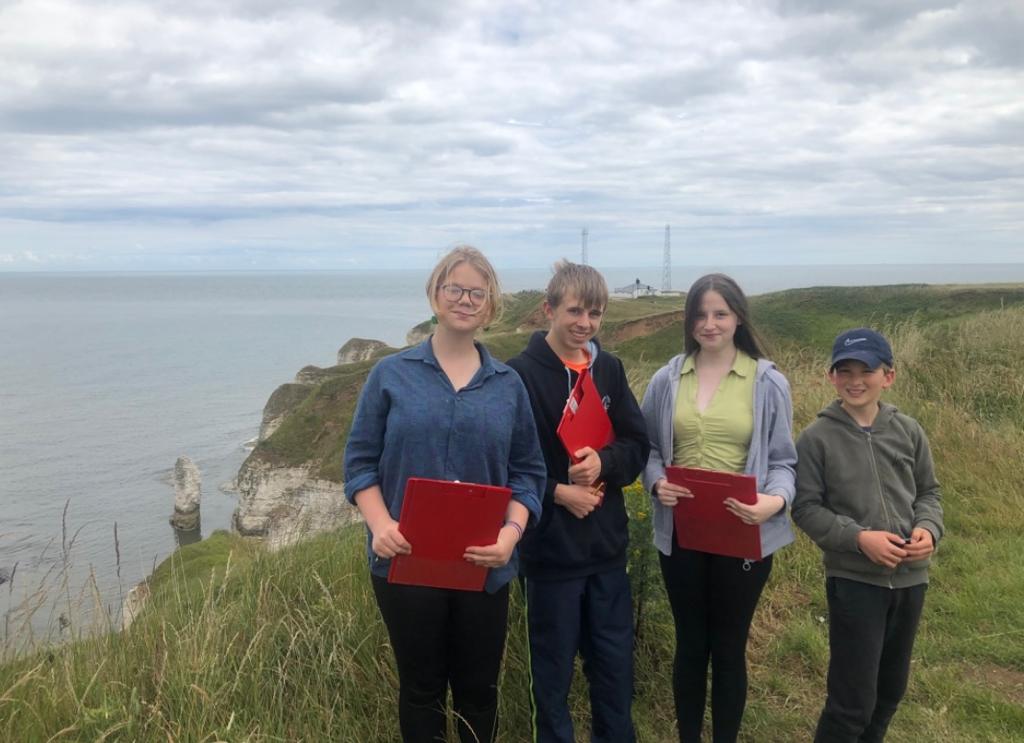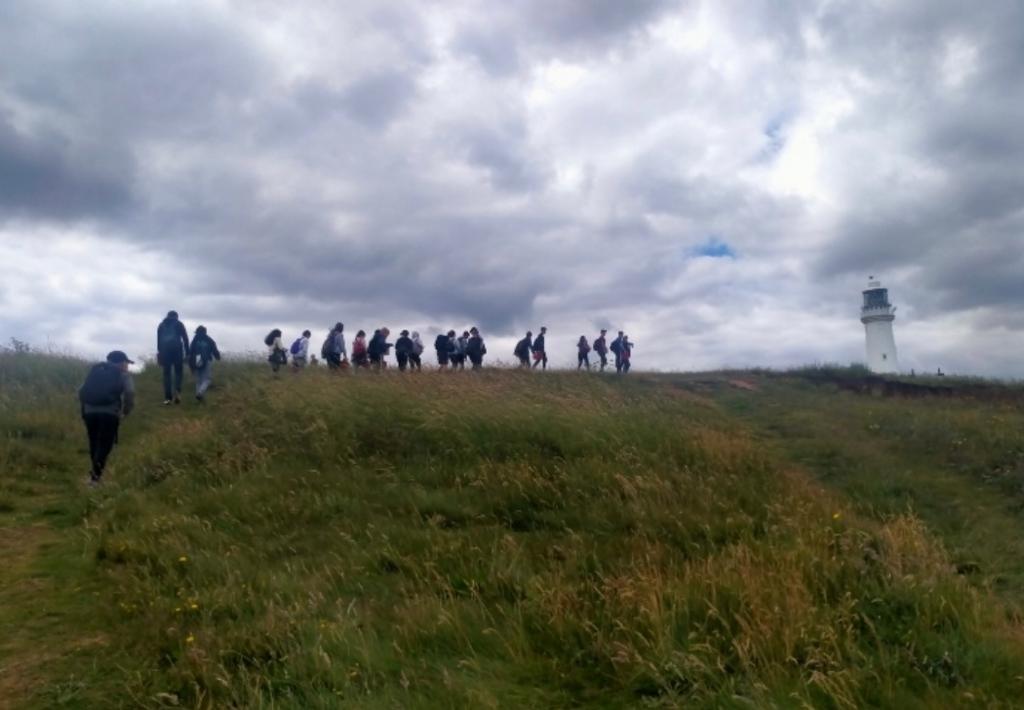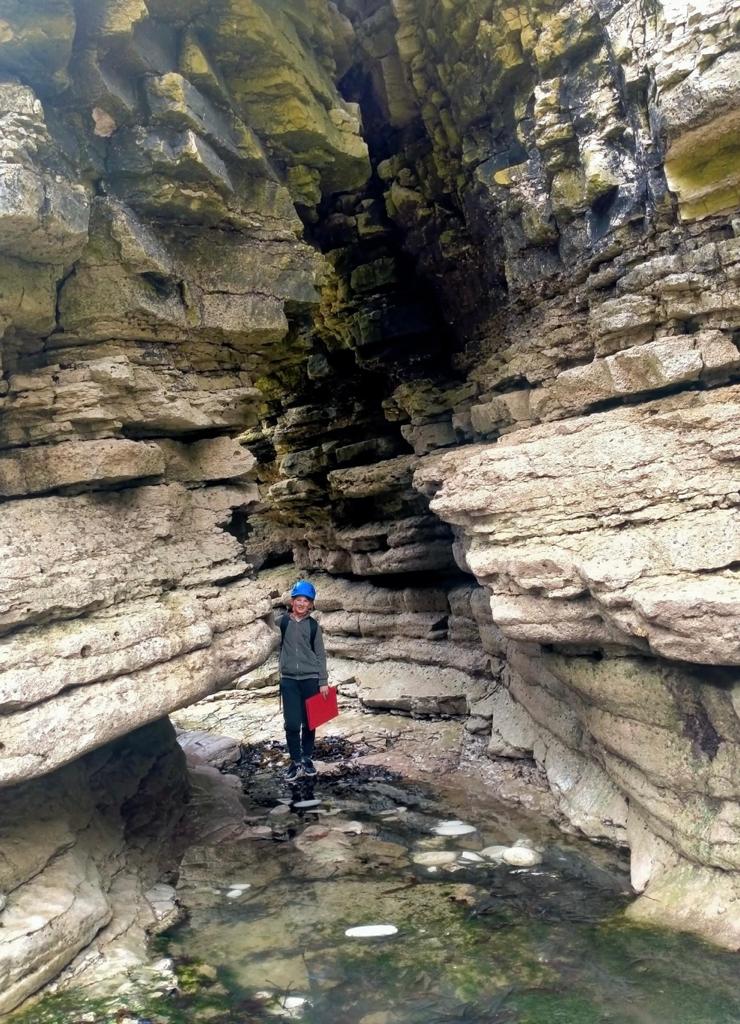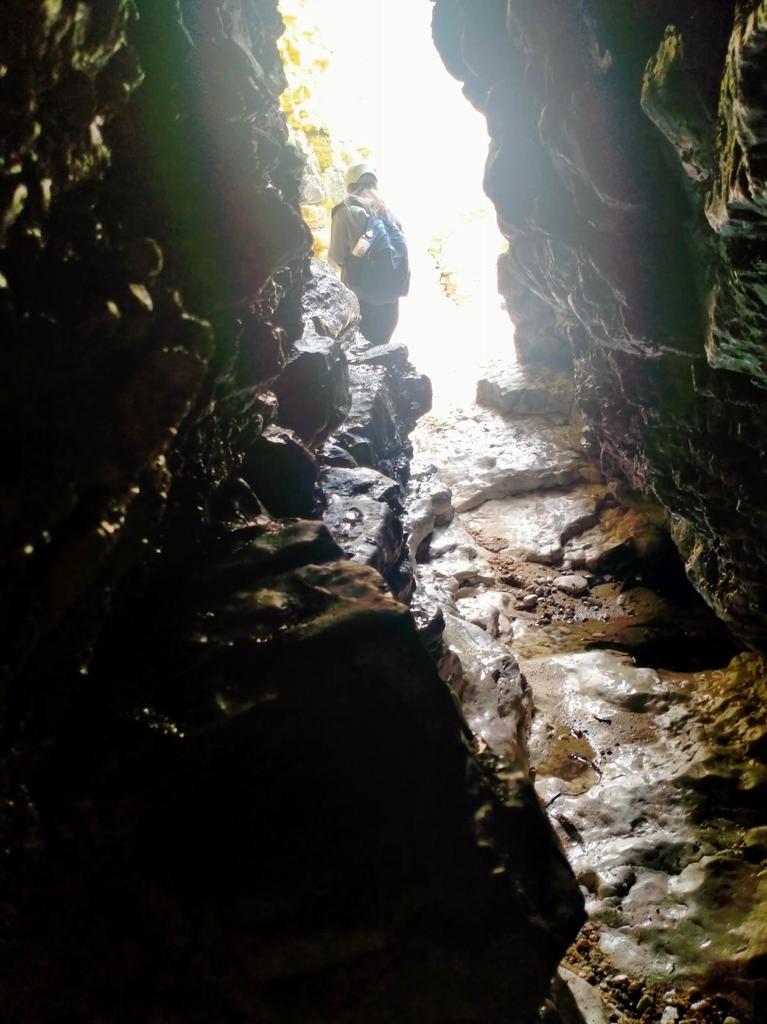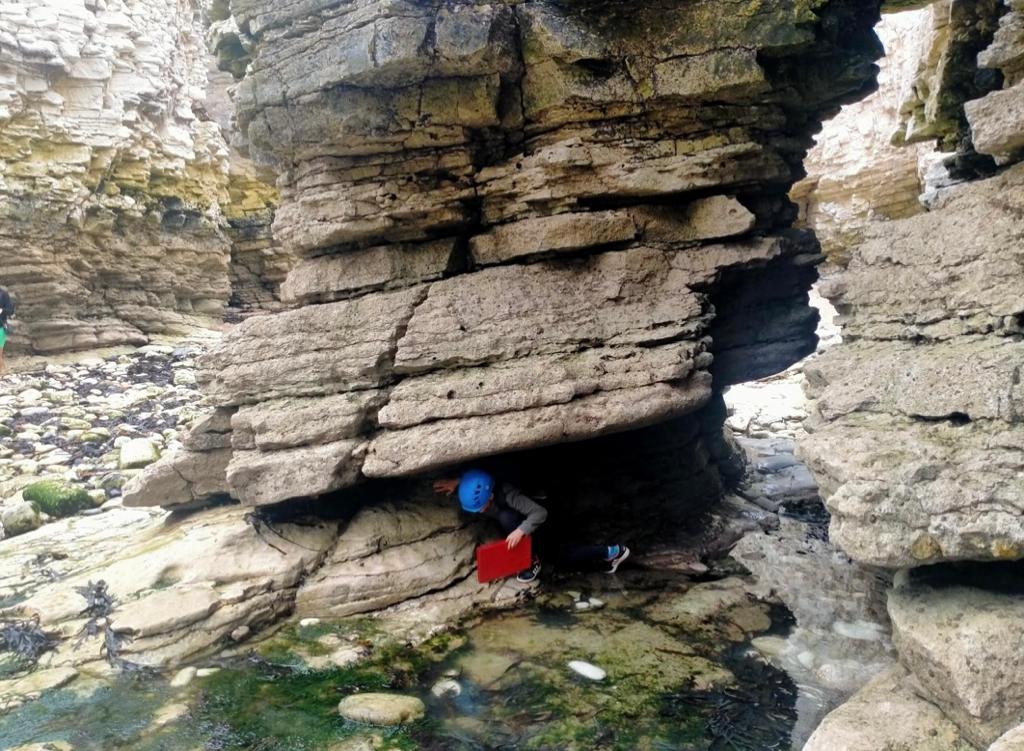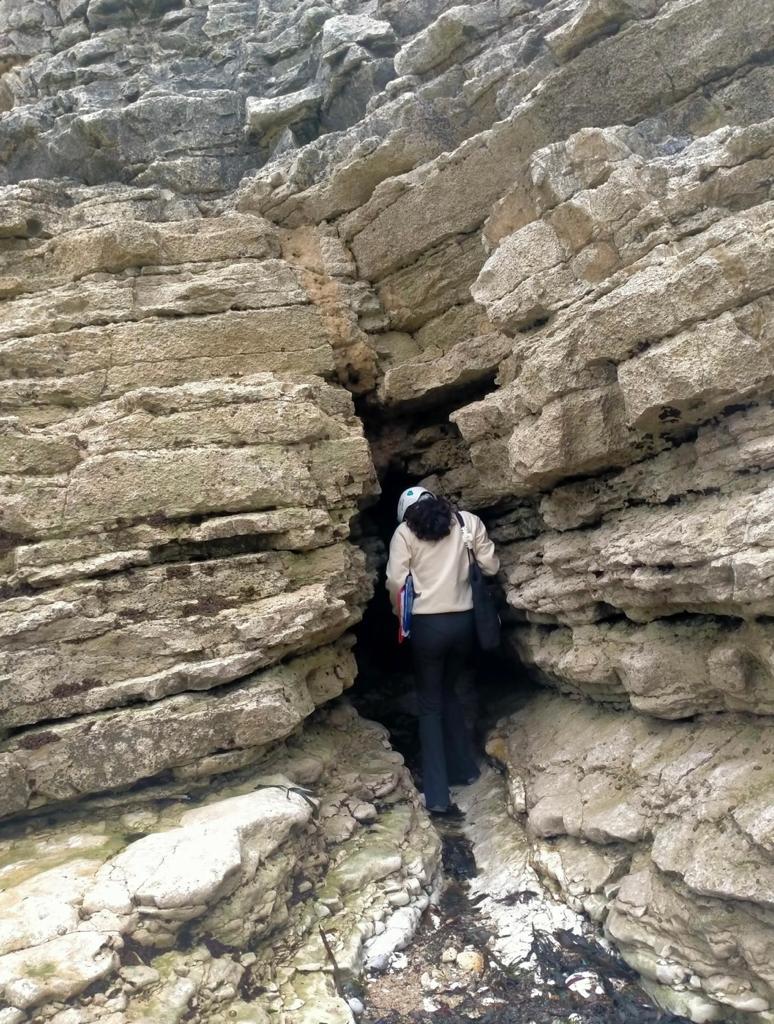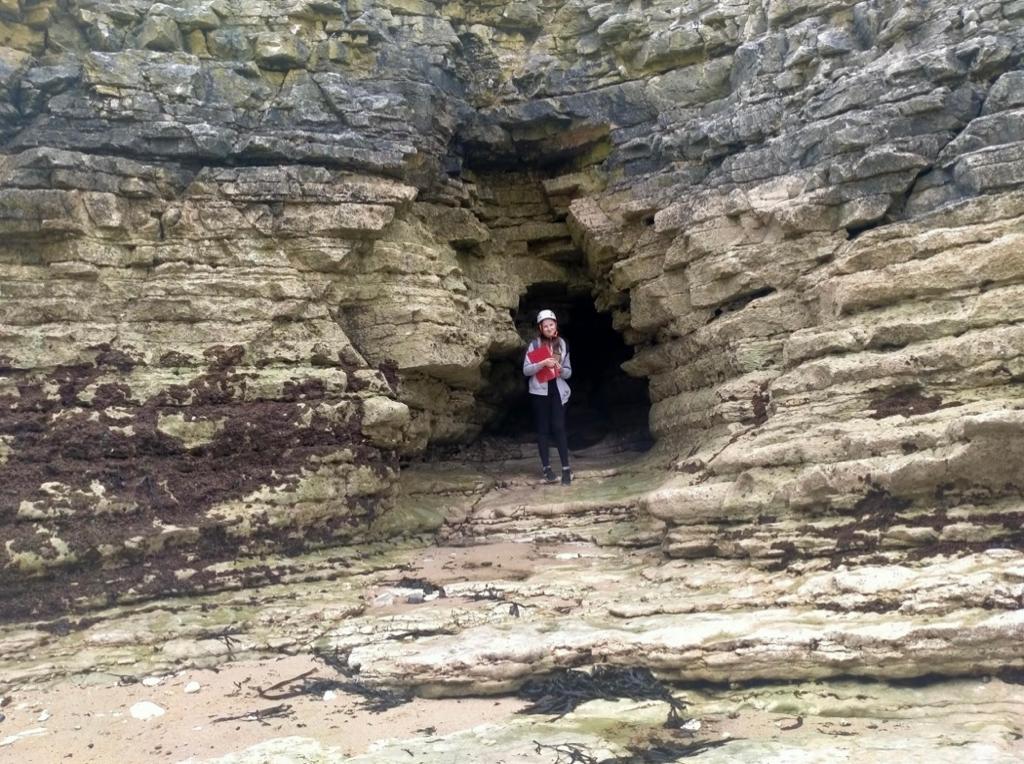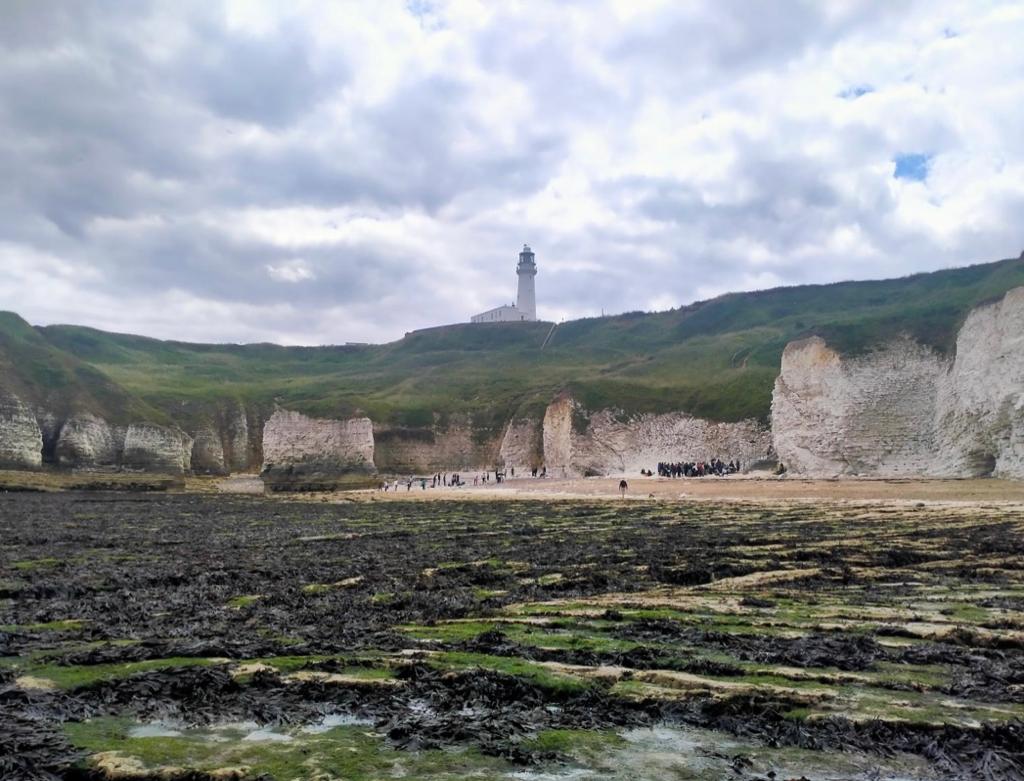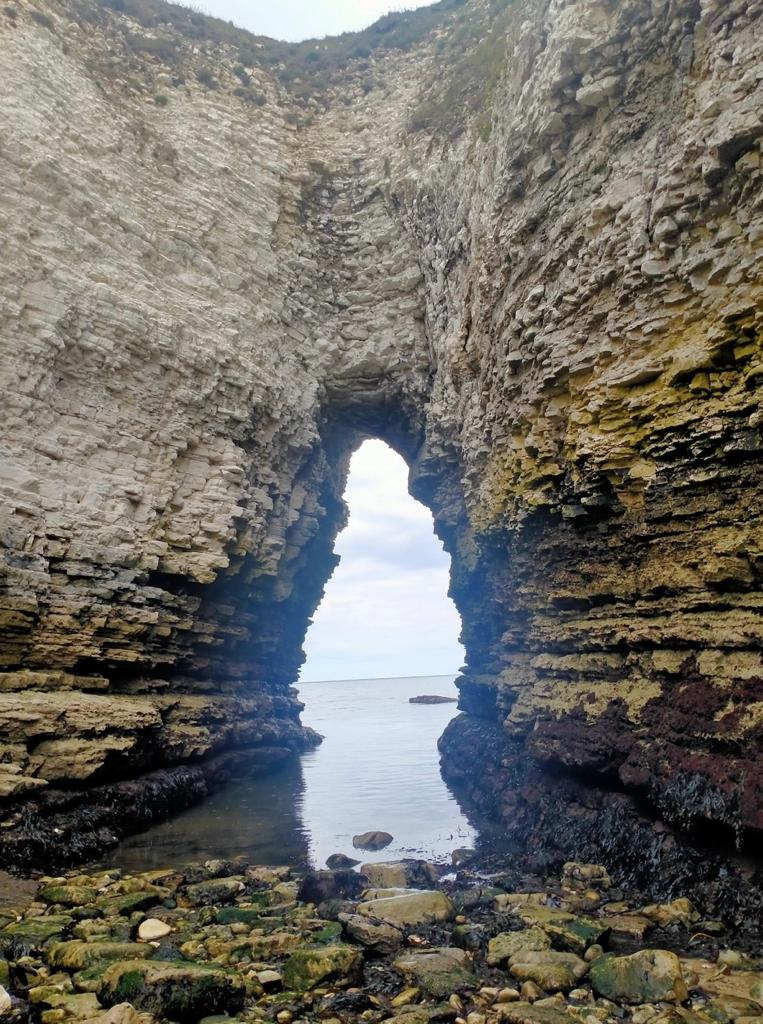A walk on the wild side
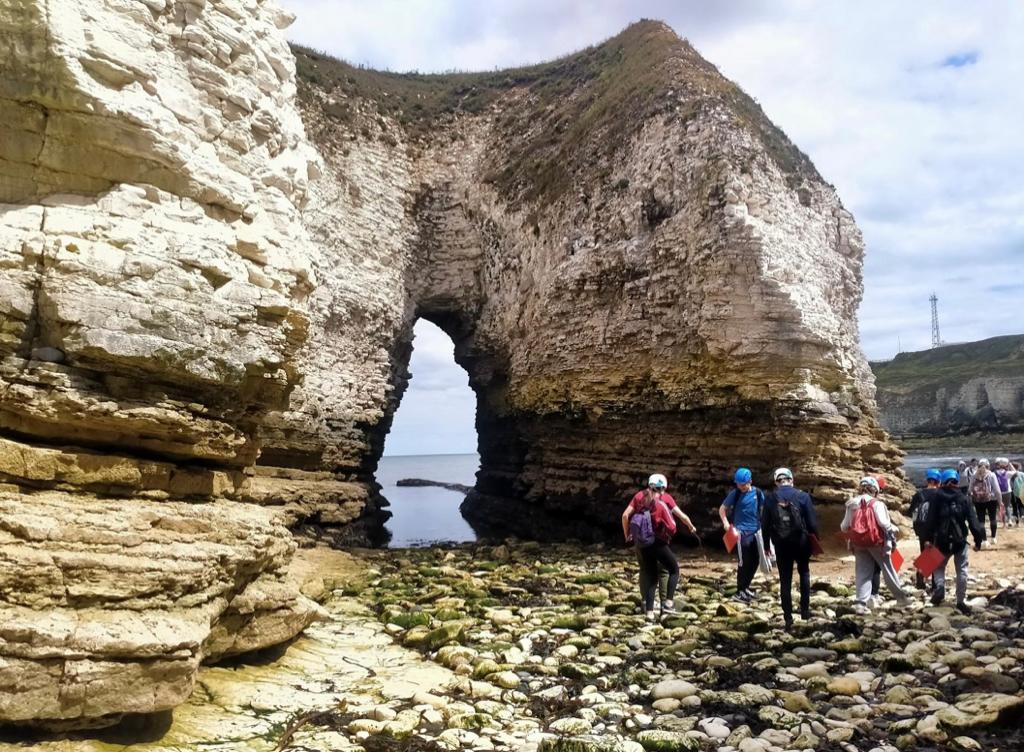
Wildlife enthusiast MAXWELL ALDERSON reports on a fascinating geography trip to Flamborough Head, where the amazing and rare creatures he saw more than made up for the long and tiring walk to the beach
THROUGHOUT the summer term, Year 9 pupils learnt about coasts and the processes that occur there. Therefore, it was only fitting that we should venture out to the coast and what better place to go than to Flamborough Head where there is a wonderful variety of landforms to study.
Firstly, a bit about Flamborough Head, the headland that forms the most northerly part of the Holderness coast. The chalk of the cliffs lies in distinct horizontal layers, formed from the remains of tiny sea creatures millions of years ago. Above the chalk is a layer of glacial till (left behind by a glacier about 18,000 years ago during the last ice age). As the cliffs below are eroded, huge lumps of clay soil fall into the sea in landslips.
It was a fine day when we arrived at the coast. The spectacular white chalk headland was an impressive sight as well as the many caves, arches, stacks and stumps that had been eroded over time by the pounding waves of the North Sea.
Being a wildlife enthusiast, it is only natural for me to write a bit about the inhabitants there. The chalk grassland provides a brilliant habitat for all sorts of amazing and rare creatures. On that day we saw grey seals, puffins, shags, guillemots, razorbills and kittiwakes. Also seen in the chalk grassland were an abundance of narrow-bordered 5-spot burnet moths. These beautiful moths are a specialist of chalk grassland and consequently, Flamborough Head is one of the best places to see them in Yorkshire.
The entire day was very enjoyable. We all had fun exploring the caves and studying the different landforms. We sat down on the rocks to draft a poem, or a descriptive writing piece, about Flamborough Head. The walk to and from the beach was tiring. However, we rewarded ourselves with ice-creams afterwards.
Overall, it really was a wonderful day, and a fantastic place to visit on a day trip out.
